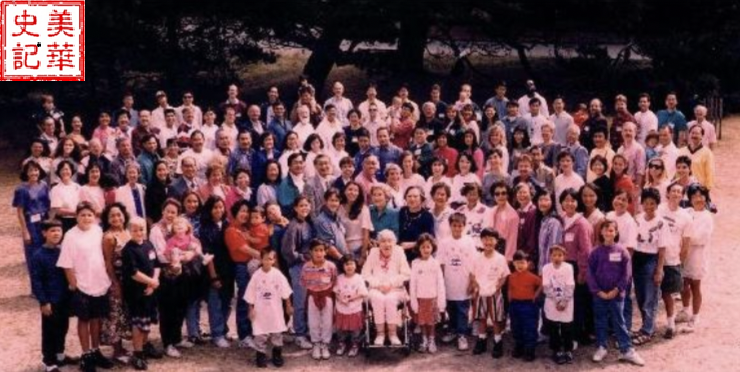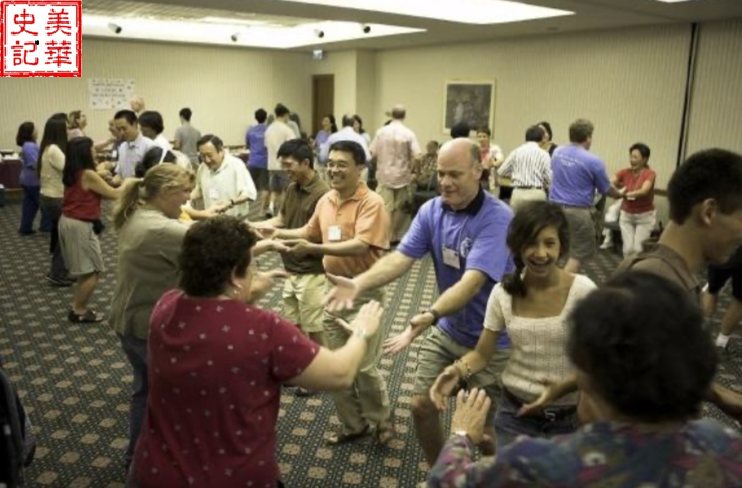Author: William Tang
Translator: Rosie P. Zhou
Reverend Huie Kin, founder of the First Chinese Presbyterian Church in New York City’s Chinatown, was born in 1854 (the fourth under Emperor Xianfeng of the Qing Dynasty) in Yongning Village, Taishan – the famous hometown of overseas Chinese in Guangdong, China. His ancestors worked in the agricultural field. As a child, he went to private school, and had the ambition to travel across the ocean to see the new world.
In 1868 (the 7th year under Emperor Tongzhi of the Qing Dynasty), Huie Kin was 14 years old. With the accompaniment of his cousin, he left home to go to Hong Kong and afterwards, sailed eastward across the Pacific Ocean to the United States to earn a living. After more than 60 days of voyage, they arrived in San Francisco, California. At first, Huie served as a servant in an American household, earning only one yuan and five cents a week. Soon after, he was employed by a German-American Christian couple in Oakland, California. The couple treated him kindly and took him to the Broadway Presbyterian Church in Oakland every Sunday. At first, he only went to learn English and please his master, but gradually he developed a keen interest in the Christian faith. With the enthusiastic help and guidance of the Presbyterian pastor Ayako and his wife, Huie was baptized and converted to Christianity in July 1874. Since then, he worked hard to learn about Christianity and yearned to dedicate his life to preaching at the church as a pastor.

Picture 1: Huie Kin (1854-1934) and his wife Louise Van Arnam Huie (1864-1944), (taken from bdcconline.net)
Pastor Ai Yage admired Huie’s diligence and ambition, and he had a kind heart so he decided to mentor him. In 1882, Pastor Ai recommended him to study English at Geneva College in Pennsylvania. Two years later, in 1884, Huie was first transferred to Western Pennsylvania University (now University of Pittsburgh) and then to Lane Seminary in Cincinnati, Ohio, to study theology.
In the summer of 1885, he completed his studies at Lane Seminary and was sent by the Presbyterian Mission to Chinatown in New York to engage in church pioneering. He first visited Chinese shops and laundry workshops to understand the conditions and needs of Chinese laborers. Then, he started with Sunday school and gradually expanded to adults, spread the gospel among the Chinese community, and finally established a Chinese church.
Ms. Louise Van Arnam, a Dutch-American, volunteered to assist him in his mission in Chinatown as a Sunday school teacher.
After a period of time, Louise accepted the appointment by the Presbyterian Ministry to work with Huie. Their common mission and pursuit of faith helped them fall in love with each other and eventually get married.
In 1887, at the Presbyterian Church of New York University, Pastor George Alexander hosted the wedding for Huie and Louise. After the marriage, the two of them became even more affectionate and had a happy family life. Together, they preached as leaders of faith in the Chinese community.
At the time, the Chinese had many bad habits, such as gambling. Huie and his wife used the gospel of Christ to purify people’s hearts, help them escape the evil abyss of gambling, and guide them to establish a healthy outlook on life and hope for an eternal life. They put in a lot of effort and were good shepherds and helpful friends of the Chinese in New York.

Picture 2: Pastor Huie Kin and his three sons and four daughters in a family portrait, (taken from overseamission.pixnet.net)
Their prolonged missionary efforts finally bore fruit, and the number of Chinese Christians was increasing day by day. In 1910, Huie and his wife used the money donated by Chinese Christians to purchase land and build a church in Midtown Manhattan, New York, and established the First Chinese Presbyterian Church in New York City. The church was the first Chinese self-supporting church in New York and the first church presided over by a Chinese pastor. This initiative was of extraordinary significance.
The location of the First Chinese Presbyterian Church in New York is relatively close to Columbia University and New York University. It is also very convenient for Chinese living in Chinatown to go there. The church is open to all Chinese living overseas at any time, so many people come to the church for meetings and visits and are even welcomed to stay for a few days.
Dr. Sun Yat-sen, who led the revolution in China back then, lived in the dormitory of the church every time he passed through New York. Pastor Huie Kin warmly welcomed and helped Dr. Sun. They became good acquaintances over the years. According to Huie’s memoirs and his third daughter Xu Lingyu’s memories, revolutionary party members Wang Chonghui and the Wang Chongyou brothers also frequented the church to discuss revolutionary matters. The theoretical principles of the Five-Power Constitution were discussed and decided in the upper room of the church. Huie and his wife took the honor of receiving Dr. Sun and the revolutionary party members during the difficult period of the revolution, which helped the Chinese revolution.

Picture 3: August 1994, second Hui family gathering in Monterey, California, (taken from huiekin.org)
Huie loved his Chinese compatriots deeply, and devoted his life to helping Chinese Americans in the United States. He devoted a great amount of effort to the Chinese people’s well-being and rights, and was respected and loved by many Chinese.
In 1919, Huie, who was 65 at the time, retired, and the couple returned to China to settle.
The marriage between Huie and Louise, an intermarriage between an Asian and a white, was strongly discouraged at the time. They had three children and six daughters after marriage, and raised their children amidst the struggle against racial discrimination. The children received good family education and school education, and had a strong faith in Christianity. All three sons married American women. Their six daughters, most of whom graduated from Ivy League universities, all had excellent grades and were talented sports players. All six daughters married Chinese Christian students studying in the United States, who graduated from Yale University, Columbia University, Cornell University, Princeton University and other prestigious universities. Huie’s and Louise’s son-in-laws were Zhang Fuliang, Yan Yangchu, Zhu Youyu, Gui Zhiting, Zhou Xuezhang, and Wang Yihui. They were the elites of the Chinese generation who returned to China with their wives. After returning to China, they made significant contributions to society and the country in their respective fields. Some people say that the influence and reputation of the Kin family is second only to the Song Yaoru family.

Picture 4: August 2006, fifth Hui family gathering in Bethesda, Maryland (taken from huiekin.org)
Huie died in Beijing in January 1934 and was buried in the Anglican Cemetery. His wife Louise died in 1944 and was buried on Mt. Kisco in Westchester, New York.
There are now 400 or 500 descendants of Huie and his wife, all over the Americas, Europe, and Asia. The Christian faith and pure love was the basis of their marriages, so they had cultural and racial tolerance, and interracial marriages among them were common. Professional fields among them included the arts, science, medicine, etc. As of July 2010, they have held six Global Huie Kin Family Reunion Conferences throughout the United States.
Reference
1,许芹后代网 huiekin.org
2,华人移民史 chineseamericanhistorian.blogspot.net
3,东成西就的许氏家族 overseamissin.pixnet.net
4,许芹 bdcconline.net
5,中国基督教人物小传 books.google.com
6,一个中西合璧大家族的源头 groups.wenxuecity.com
